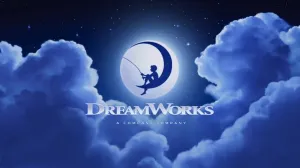It remains a perplexing mystery of Star Wars lore: how did the Empire manage to secretly start construction on a second, even more formidable Death Star after the devastating loss of the first? Fresh from their hard-won victory at the Battle of Yavin, the Rebel Alliance should have been hyper-vigilant for any similar Imperial projects. Their intelligence networks, fueled by the desperate need for freedom and the bitter lessons learned from the first superweapon, would logically have been laser-focused on detecting colossal construction efforts. Yet, the shadow of a second planet-destroying weapon rose; a testament to either the Empire’s unprecedented covert capabilities or a significant lapse in Rebel awareness.
Videos by ComicBook.com
This curious oversight, a period of apparent silence on a galactic scale regarding such a massive undertaking, seems almost improbable given the high stakes and the immense resources the Empire would have needed to allocate.
The Cost of Knowledge Intelligence in a Galaxy at War

The events leading up to the destruction of the first Death Star, as seen in Rogue One: A Star Wars Story, underscore the immense risks and sacrifices made to ensure the blueprints came into rebel hands. The film chronicles the desperate mission undertaken by Jyn Erso, a woman haunted by her father’s forced involvement in the weapon’s creation, and Cassian Andor, a seasoned Rebel intelligence officer burdened by morally gray assignments. Their journey, fraught with peril and culminating in the tragic loss of their lives and the entire team on Scarif, highlights the critical importance of understanding the Death Star’s vulnerabilities.
The data they managed to transmit at the cost of everything became the key to Luke Skywalker’s fateful shot that ignited the chain reaction leading to its demise in Star Wars: A New Hope. Rogue One serves as a stark reminder of the intelligence battles waged in the shadows and the lives extinguished in the pursuit of information that could tip the scales against the seemingly invincible Empire. Cassian and Jyn’s success in obtaining those plans wasn’t a mere footnote in the galactic conflict—it was a pivotal moment and a testament to the unwavering resolve of those who dared to fight back.
RELATED: Star Wars Already Showed Mon Mothma’s Speech to the Rebel Alliance Years Ago
Further exploring the early stages of the Rebellion and the morally gray choices made in its name is the Disney+ series Star Wars: Andor. The show delves into the formative years of Cassian Andor, years before the events of Rogue One, depicting his transformation from a self-serving survivor into a committed Rebel operative. Through gritty storytelling and complex character development, Andor showcases the challenges of building a rebellion from the ground up, the necessary compromises, and the constant threat of Imperial surveillance.
The series reveals a galaxy simmering with discontent, where whispers of defiance gradually coalesce into organized resistance. We see the early intelligence gathering efforts, the recruitment of disillusioned individuals, and the constant struggle to stay one step ahead of the Empire’s pervasive reach. Andor provides a crucial context for understanding the environment in which the Rebellion operated in the years leading up to A New Hope, emphasizing the constant need for information and the high price paid for even the smallest victories against a seemingly omnipotent foe.
Given the monumental effort and the devastating losses incurred to obtain the plans for the first Death Star, it seems almost inconceivable that the Rebellion would not have maintained an intense focus on detecting any signs of the Empire repeating such a catastrophic project. The destruction of the first Death Star was not the end of the war—it was a significant victory, but the Empire’s vast resources and unwavering grip on the galaxy remained. Surely the Rebel Alliance, having witnessed the destructive power of such a weapon firsthand with the obliteration of Alderaan, would have prioritized intelligence gathering on large-scale Imperial construction projects. One would expect their spies, their informants, and their reconnaissance missions to be constantly searching for telltale signs of massive resource shipments, unusual concentrations of Imperial Star Destroyers in specific sectors, or the construction of colossal orbital platforms.
Shadows of the Empire’s Secrecy and Scale

Perhaps the Empire, humbled by their defeat at Yavin, doubled down on secrecy, learning from their previous vulnerabilities. They might have compartmentalized the project to an unprecedented degree, utilizing remote construction facilities in less-monitored systems and employing advanced cloaking technologies or disinformation campaigns to mask their activities. The sheer scale of the galaxy could also have played a role. With millions of star systems under Imperial control, monitoring every corner would have been an insurmountable task for the relatively smaller Rebel Alliance. The vastness of space, while offering opportunities for concealment, also presented challenges for effective intelligence gathering.
RELATED: Andor Reveals the Secret Origin of Rogue One’s Most Memorable Line
However, even with these factors in play, the construction of a second Death Star would have required an immense logistical undertaking. The sheer volume of raw materials, the number of personnel involved, and the energy required for such a massive project would have been staggering. It’s difficult to imagine that such a colossal endeavor could have remained completely undetected for an extended period. Did the Rebellion become complacent after its initial victory? Did internal conflicts or resource limitations divert their attention from long-term strategic intelligence gathering? Or did the Empire simply become masters of deception on a scale previously unimaginable?
The plot hole created by this apparent oversight is significant. It allows for the dramatic reveal of the second Death Star in Star Wars: Return of the Jedi, raising the stakes to an even higher level. The heroes, having overcome one seemingly insurmountable threat, are confronted with an even greater one, highlighting the Empire’s relentless capacity for evil and the constant struggle for the Rebellion. Yet, from a purely logical standpoint within the established canon, the lack of prior knowledge about this second superweapon remains a perplexing aspect of the conflict. It speaks to either a significant blind spot within the Rebel intelligence apparatus or an extraordinary level of Imperial secrecy that defies conventional understanding, leaving a lingering question mark in the grand saga of Star Wars.
Star Wars: Andor is now streaming on Disney+.








